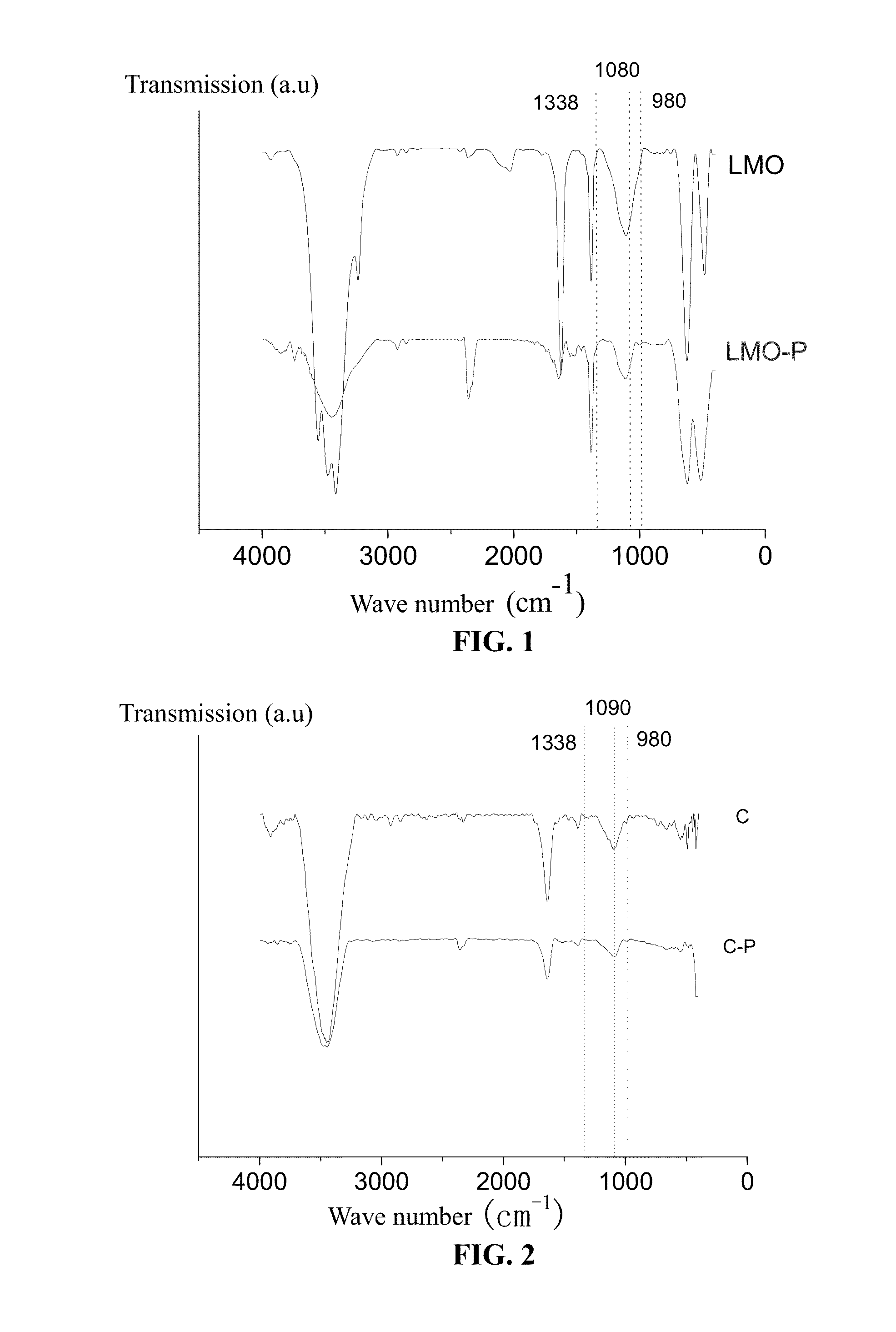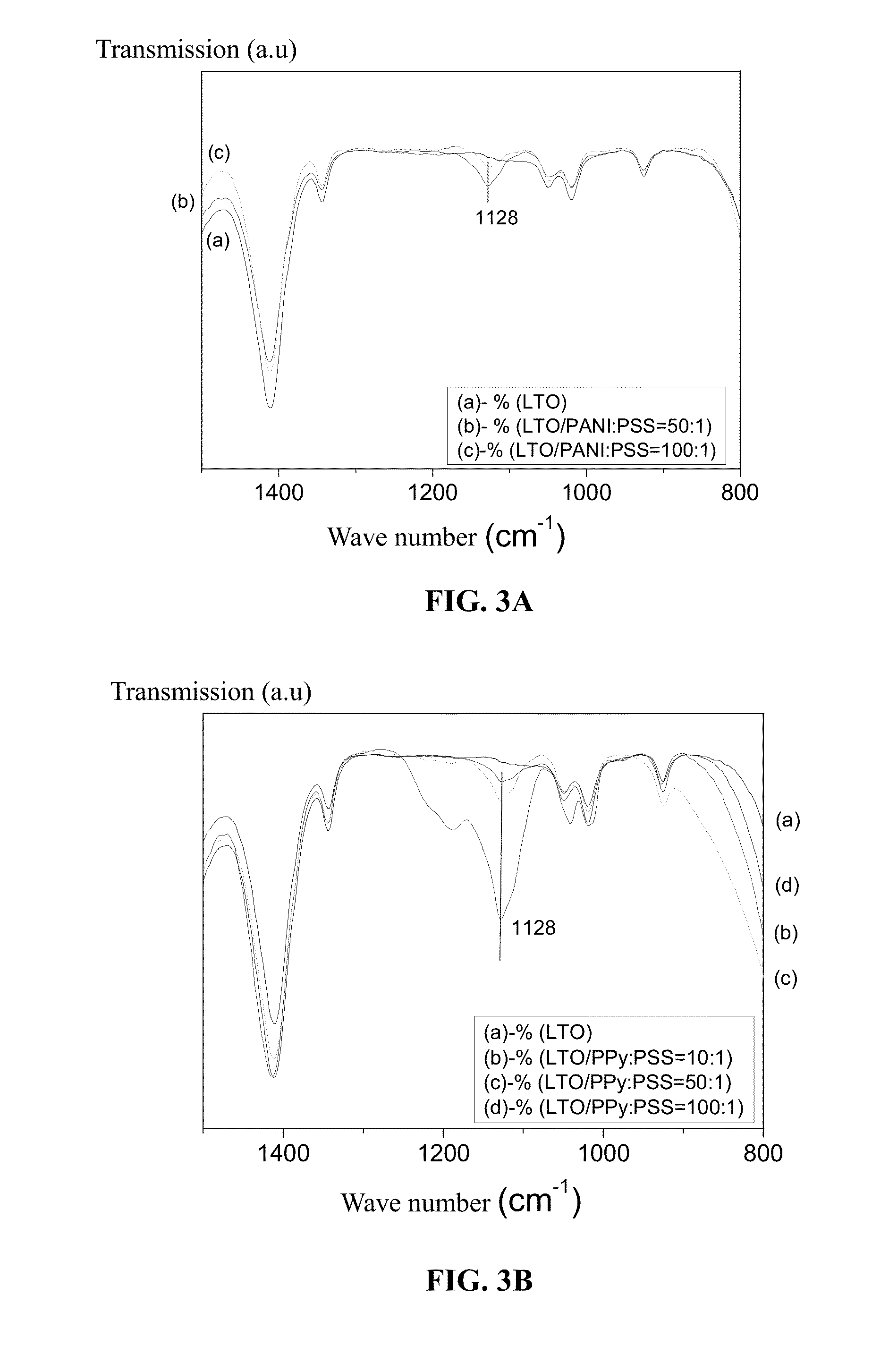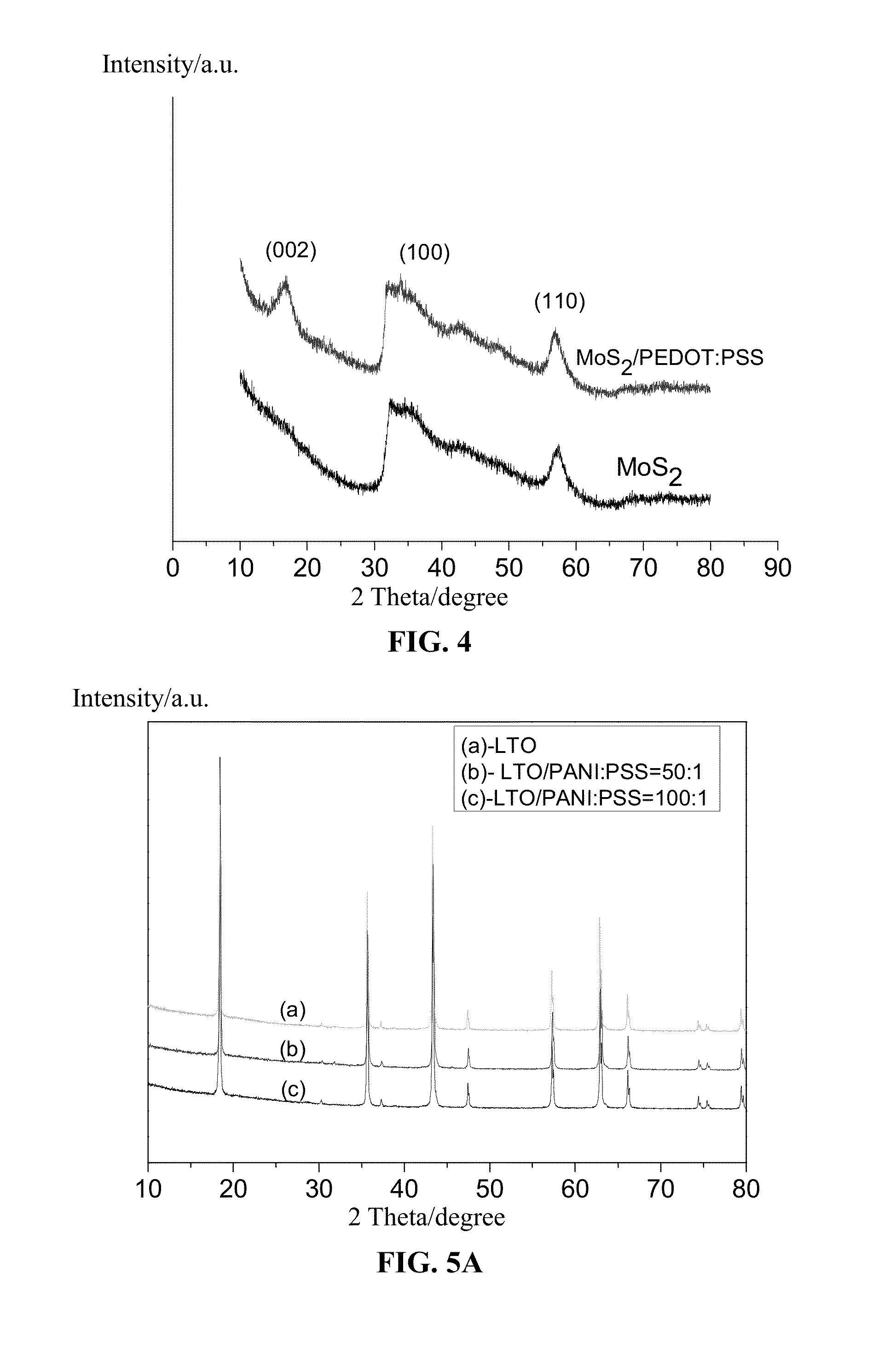Composite electrode material for lithium ion battery and preparation method thereof
a lithium ion battery and electrode material technology, applied in the direction of mechanical vibration separation, cell components, impregnation manufacturing, etc., can solve the problems of high thermal treatment temperature, composite materials are usually bulky materials, and long operating time, so as to improve electric conductivity and facilitate dispersion
- Summary
- Abstract
- Description
- Claims
- Application Information
AI Technical Summary
Benefits of technology
Problems solved by technology
Method used
Image
Examples
example 1
[0054]LiCoO2 / PEDOT:PSS
[0055]Ammonia solution was added to the aqueous solution of PEDOT:PSS to regulate the pH value thereof to be neutral (between 6 and 9). 2 g of LiCoO2 powder was slowly added to 10 mL of the aqueous solution of PEDOT:PSS. The resulting mixture was allowed to disperse for 30 min in the presence of ultrasonic wave, filtered, dried at 80° C. for 3 hours, ground completely, and dried at 120° C. for 2 hours. Thereafter, a collected product was fully ground and uniformly mixed with acetylene black and poly(vinylidene fluoride) (PVDF) in a weight ratio of 80:10:10. After coating and drying at 80° C. for 24 hours, an electrode sheet of LiCoO2 was obtained. With a lithium plate as a counter electrode, polyethylene membrane as a battery separator, and 1 M LiPF6 / EC:DEC:DMC (v:v:v=1:1:1) as an electrolyte, a button cell (CR2025) was assembled. The charge-discharge test of the button cell under constant current showed that, the voltage range was between 3.0 and 4.2 V.
example 2
[0056]LiNi0.5Mn1.5O4 / PEDOT:PSS
[0057]Ammonia solution was added to the aqueous solution of PEDOT:PSS to regulate the pH value thereof to be neutral (between 6 and 9). 0.5 g of LiNi0.5Mn1.5O4 powder was slowly added to 2 mL of the aqueous solution of PEDOT:PSS. The resulting mixture was allowed to disperse for 30 min in the presence of ultrasonic wave, self-precipitated, centrifuged, and dried at between 60 and 120° C. for 24 hours. Thereafter, a collected product was fully ground and uniformly mixed with acetylene black and PVDF in a weight ratio of 80:10:10. After coating and drying at 80° C. for 24 hours, an electrode sheet of LiNi0.5Mn1.5O4 was obtained. With a lithium plate as a counter electrode, a polyethylene membrane as a battery separator, and 1 M LiPF6 / EC:DEC (v:v=1:1) as an electrolyte, a button cell (CR2025) was assembled. The charge-discharge test of the button cell under constant current showed that, the voltage range was between 3.5 and 5.0 V.
example 3
[0058]LiMn2O4 / PEDOT:PSS
[0059]Ammonia solution was added to the aqueous solution of PEDOT:PSS to regulate the pH value thereof to be neutral (between 6 and 9). 0.5 g of LiMn2O4 powder was slowly added to 2 mL of the aqueous solution of PEDOT:PSS. The resulting mixture was allowed to disperse for 30 min in the presence of ultrasonic wave, self-precipitated, centrifuged, and dried at between 60 and 120° C. for 24 hours. Thereafter, a collected product was fully ground and uniformly mixed with acetylene black and PVDF in a weight ratio of 80:10:10. After coating and drying at 80° C. for 24 hours, an electrode sheet of LiMn2O4 was obtained. With a lithium plate as a counter electrode, a polyethylene membrane as a battery separator, and 1 M LiPF6 / EC:DEC (v:v=1:1) as an electrolyte, a button cell (CR2025) was assembled. The charge-discharge test of the button cell under constant current showed that, the voltage range was between 3.5 and 4.3 V.
PUM
| Property | Measurement | Unit |
|---|---|---|
| concentration | aaaaa | aaaaa |
| concentration | aaaaa | aaaaa |
| dispersion time | aaaaa | aaaaa |
Abstract
Description
Claims
Application Information
 Login to View More
Login to View More - R&D
- Intellectual Property
- Life Sciences
- Materials
- Tech Scout
- Unparalleled Data Quality
- Higher Quality Content
- 60% Fewer Hallucinations
Browse by: Latest US Patents, China's latest patents, Technical Efficacy Thesaurus, Application Domain, Technology Topic, Popular Technical Reports.
© 2025 PatSnap. All rights reserved.Legal|Privacy policy|Modern Slavery Act Transparency Statement|Sitemap|About US| Contact US: help@patsnap.com



